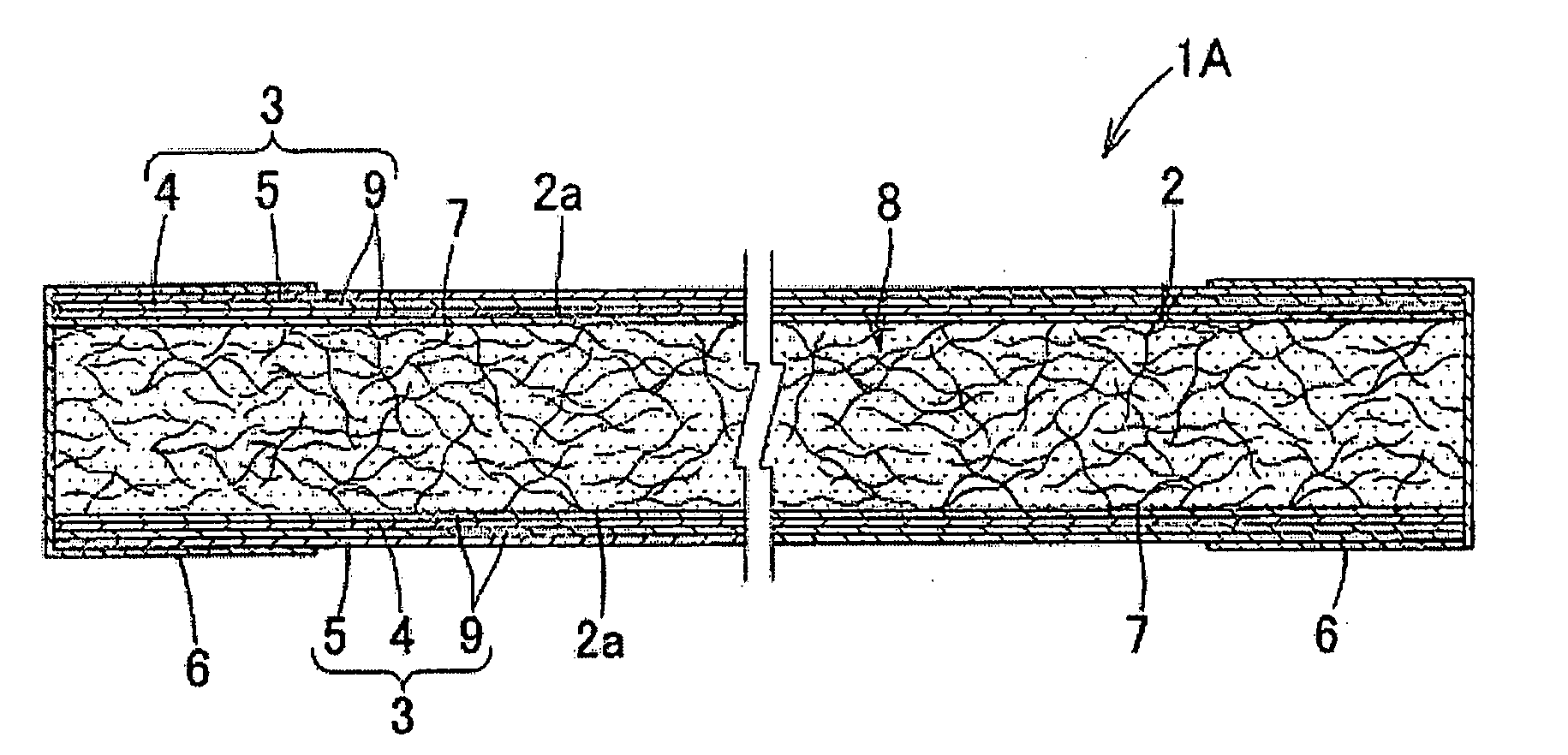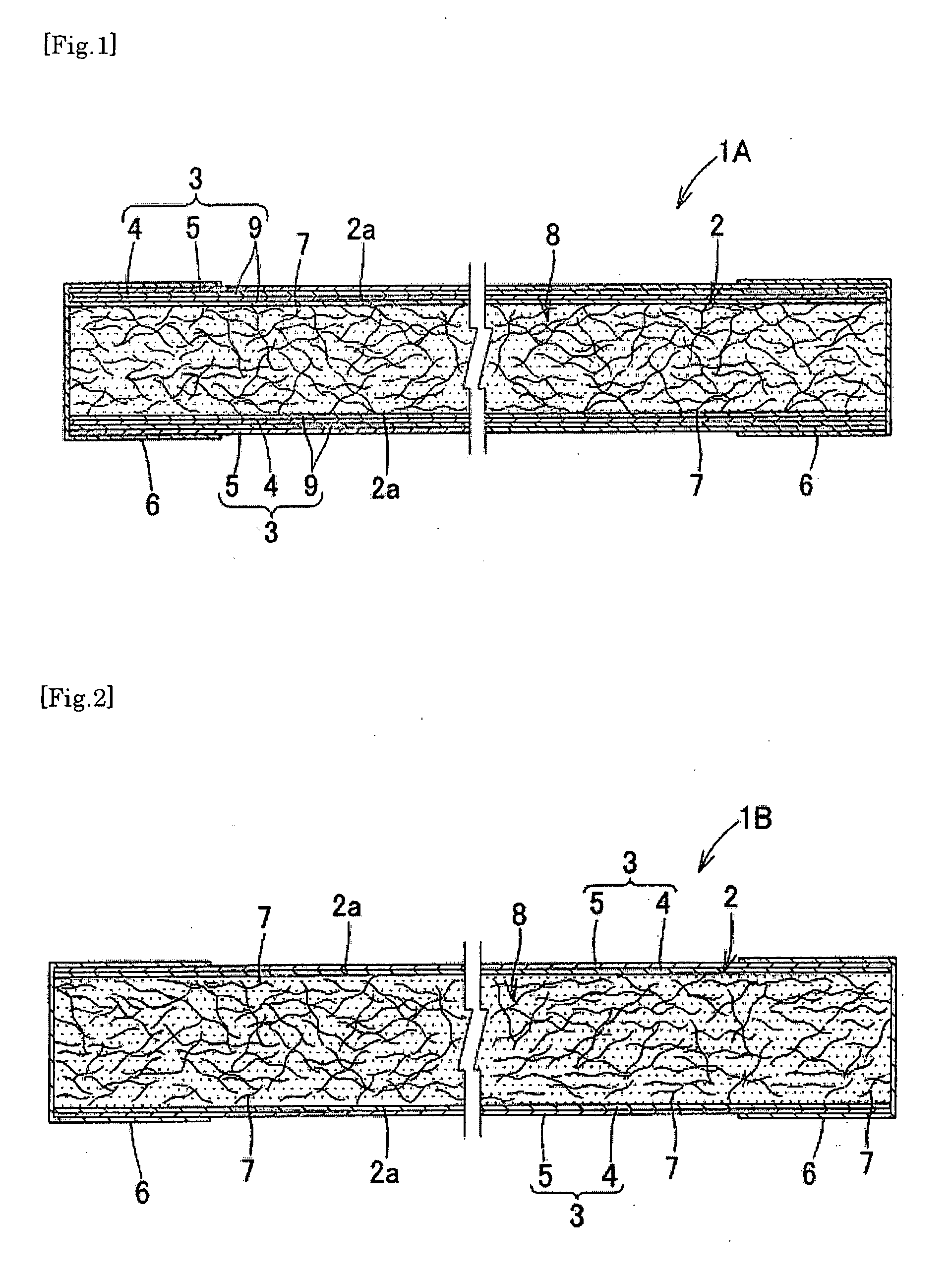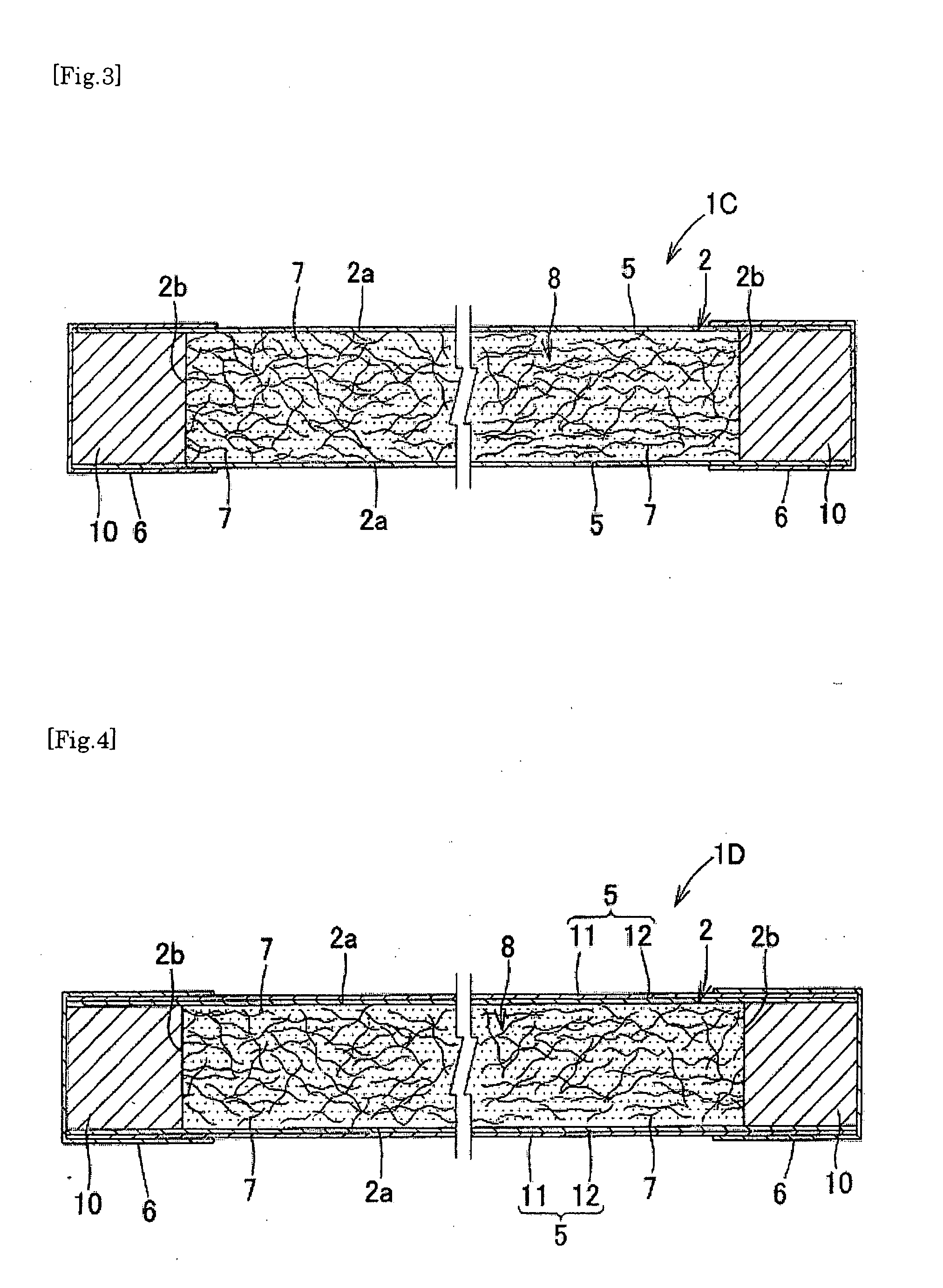Lightweight cement panel
a cement panel and light weight technology, applied in the field of light weight cement panels, can solve the problems of low durability and water resistance of plywood, deformation of the cement panel, and increased weight, so as to improve the water resistance of the lightweight cement panel, prevent water absorption from the panel surface, and increase the weight of the panel
- Summary
- Abstract
- Description
- Claims
- Application Information
AI Technical Summary
Benefits of technology
Problems solved by technology
Method used
Image
Examples
example 1
Manufacture of a Panel Proper Formed by a Porous Compact
[0119]For 100 parts by weight of early-strength Portland cement, 35 parts by weight of water and 0.3 parts of water-reducing admixture were added and mixed, to which cement milk with Vinylon short fibers added to achieve 1.0 part by weight for 100 parts by weight of cement was mixed and kneaded. On the other hand, air was added to a foaming agent and the mixture was stirred and mixed to be prefoamed 20 times. This prefoamed foaming agent was added to the cement milk in such a manner that one part by weight was achieved for 100 parts by weight of cement and kneaded, and a cement mixture was obtained. This cement mixture was filled into a metal pressure-proof formwork measuring 1780 mm in length by 580 mm in width by 300 mm in height, was cured with steam for 3 hours in a hermetically sealed state, had the formwork removed, was further cured with steam for 21 hours, and then, was cured at room temperature for 6 days, and a block-...
PUM
| Property | Measurement | Unit |
|---|---|---|
| specific gravity | aaaaa | aaaaa |
| specific gravity | aaaaa | aaaaa |
| length | aaaaa | aaaaa |
Abstract
Description
Claims
Application Information
 Login to View More
Login to View More - R&D
- Intellectual Property
- Life Sciences
- Materials
- Tech Scout
- Unparalleled Data Quality
- Higher Quality Content
- 60% Fewer Hallucinations
Browse by: Latest US Patents, China's latest patents, Technical Efficacy Thesaurus, Application Domain, Technology Topic, Popular Technical Reports.
© 2025 PatSnap. All rights reserved.Legal|Privacy policy|Modern Slavery Act Transparency Statement|Sitemap|About US| Contact US: help@patsnap.com



